I decided to choose the brief for the competition Cor Unum. The competition theme is 'Keep Playing' and encourages child-like thinking and design. I really liked the idea of experimenting with the theme of play and maybe making a piece that the user can interact with instead of just looking at.
Research on Play
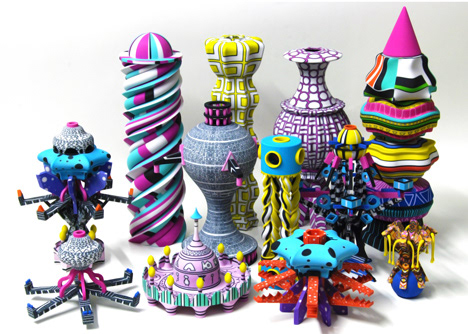
Can be found at: https://www.dezeen.com/2013/09/21/identity-parade-by-adam-nathaniel-furman/
My research started with typing the word play into the Dezeen search engine. I wanted to see how other artists had responded to the word play, although a lot of the responses were architectural and focused on playgrounds, but this piece by Nathaniel Adam Furman really jumped out at me due to the colours and shapes used. These 3D printed ceramic structures replicate different fairground rides and attractions. This inspired me to think how I think of play on a smaller scale and how I could interpret this into ceramics through different games.
I then looked at different board games, interactive and educational games mainly targeted at children. I then designed different pieces of work inspired by these games translated into simpler forms that could be put into ceramics. I thought of how the Kerplunk game could be put into ceramics as well as using outside objects like pencils to slot into the different holes into a 3D shape. I thought about how sliding parts could be used in ceramics, using ceramic counters and in the piece.

When I looked into ceramic games the first results that came up were digital games made to simulate creating ceramics. But when researching further I found a ceramic tile board game which was designed to be played in an interior design show room and matched the coloured tiles used within the rooms. This creates a connection between surroundings and the game and I'm really interested by the simple and minimalist look of the game which also matches similar areas.
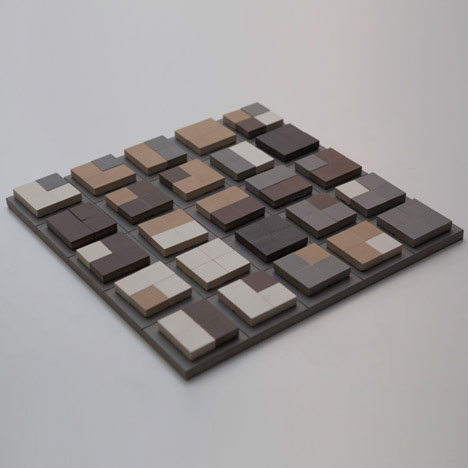
Can be found at: https://www.dezeen.com/2013/04/03/cromie-tiles-by-refin-in-milan/
When researching games within ceramics there weren't a lot of results except for ceramic board games e.g. tic tac toe, snakes and ladders and chess. Although I liked the idea of a ceramic board game, the process of using it compared to wood would be different in terms of texture and weight. I think a 3D shape used within the game would be more interesting.
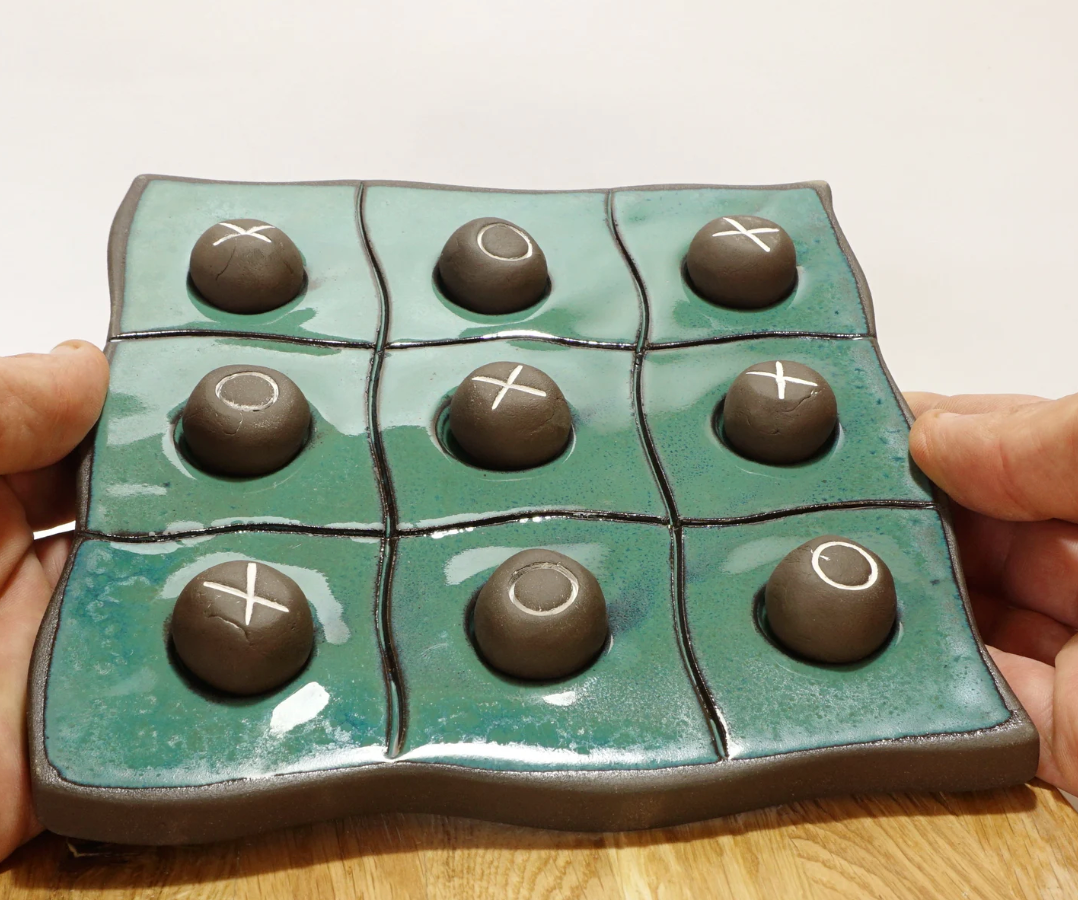
Can be found at: https://www.etsy.com/uk/listing/588090357/tic-tac-toe-ceramic-game-tic-tac-toe
Task 2 - Initial Ideas

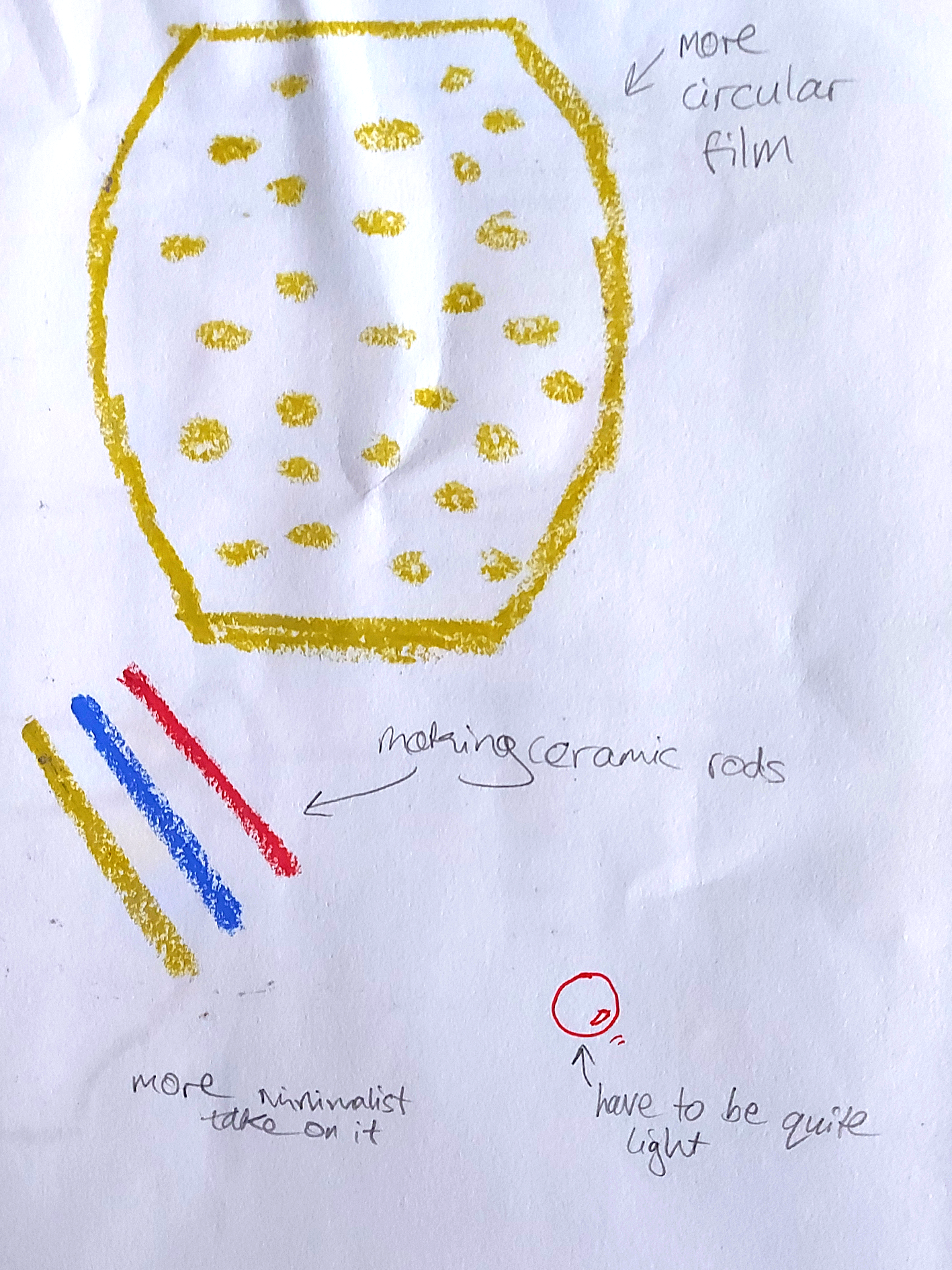
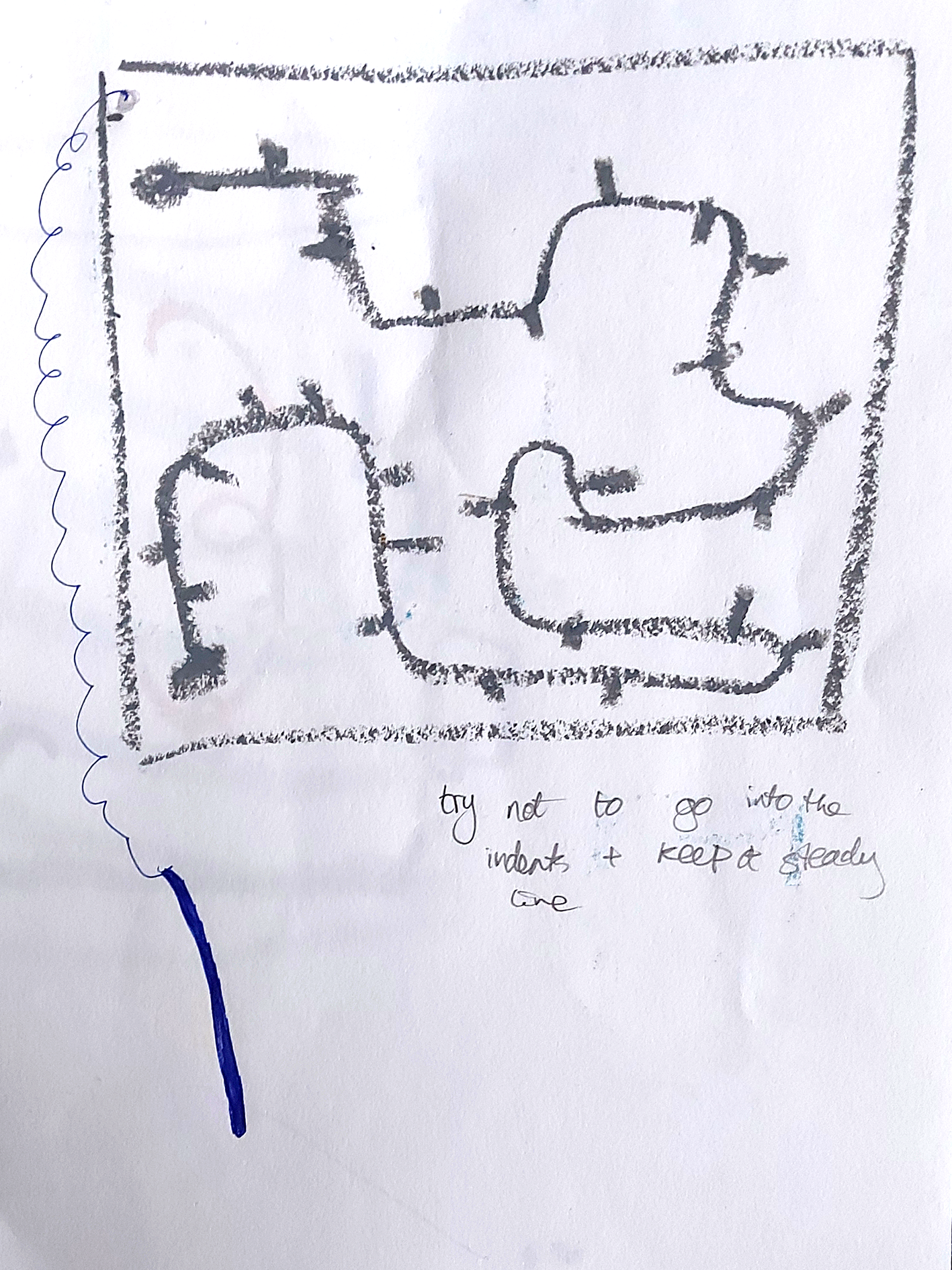
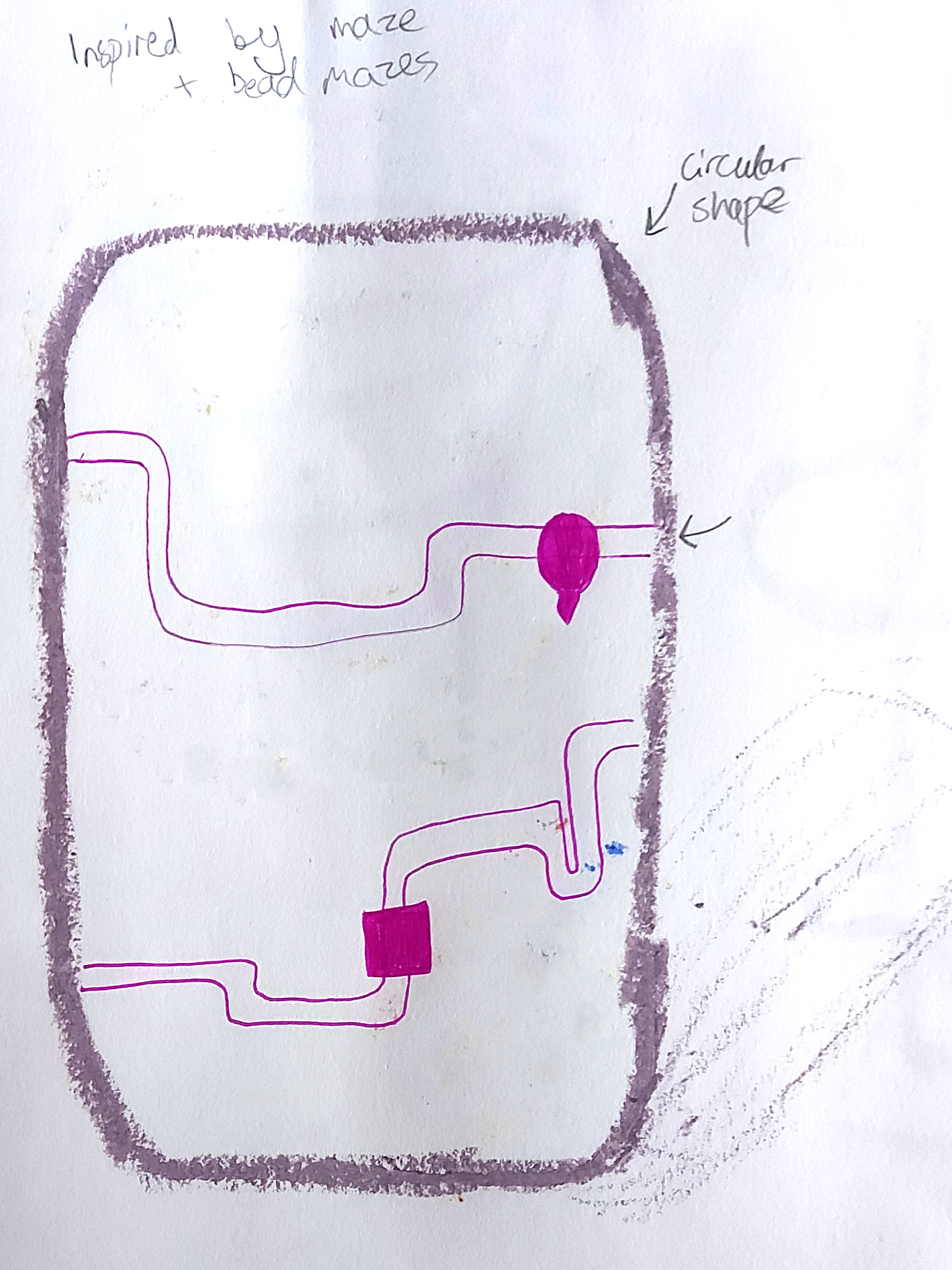
My first two pieces were inspired by Kerplunk which was one of the games I found in my research. I really like the idea of adding a game to ceramics as that's not normally seen as shown with my research. I continued this with two maze like designs inspired by games like operation and sliding games. I really like the idea of motion being a part of a ceramic piece instead of it just being a visual piece. The user interacting with the ceramic piece that has a different texture to other materials that could be within the home or the workspace I think is really interesting.
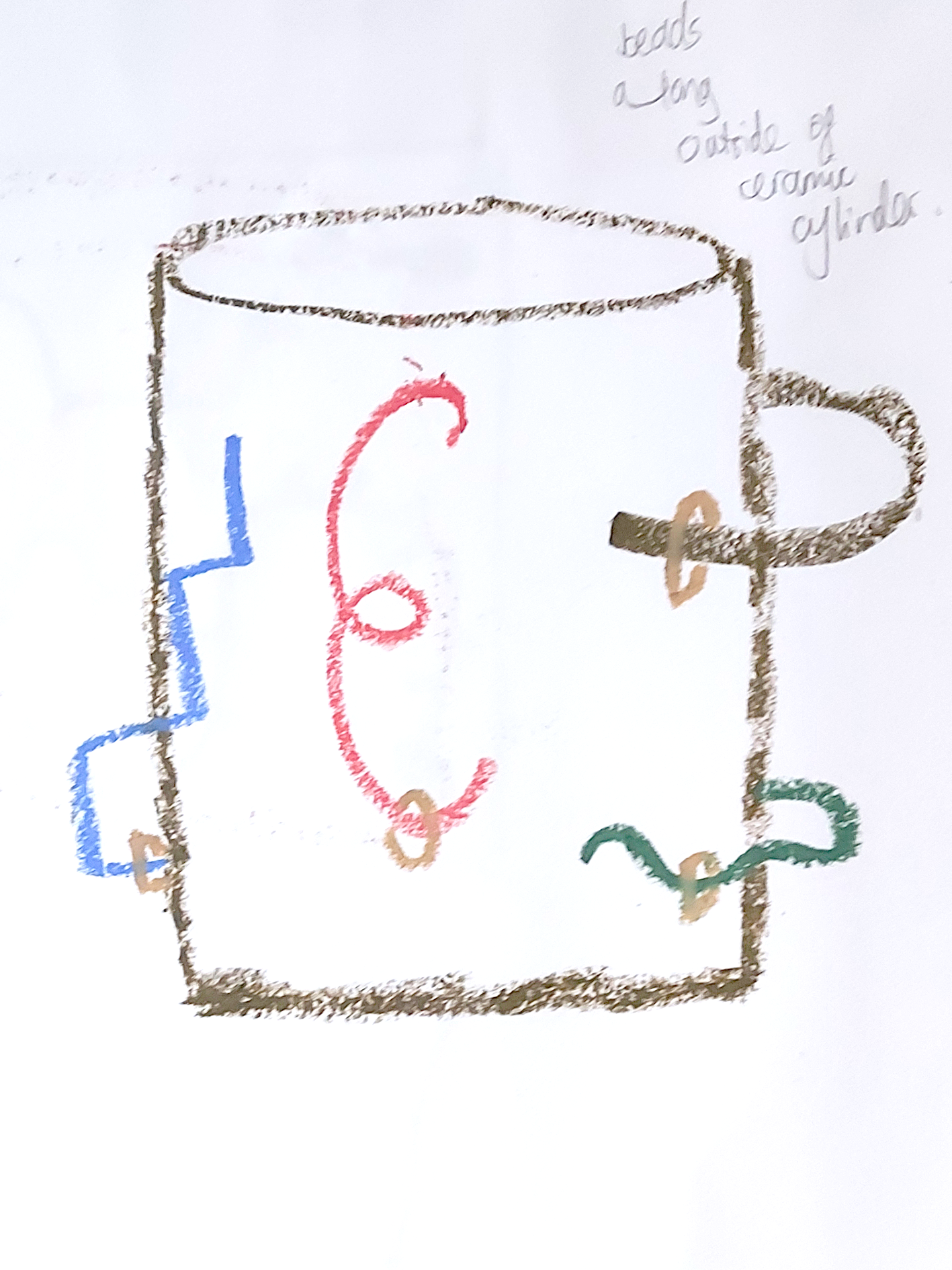

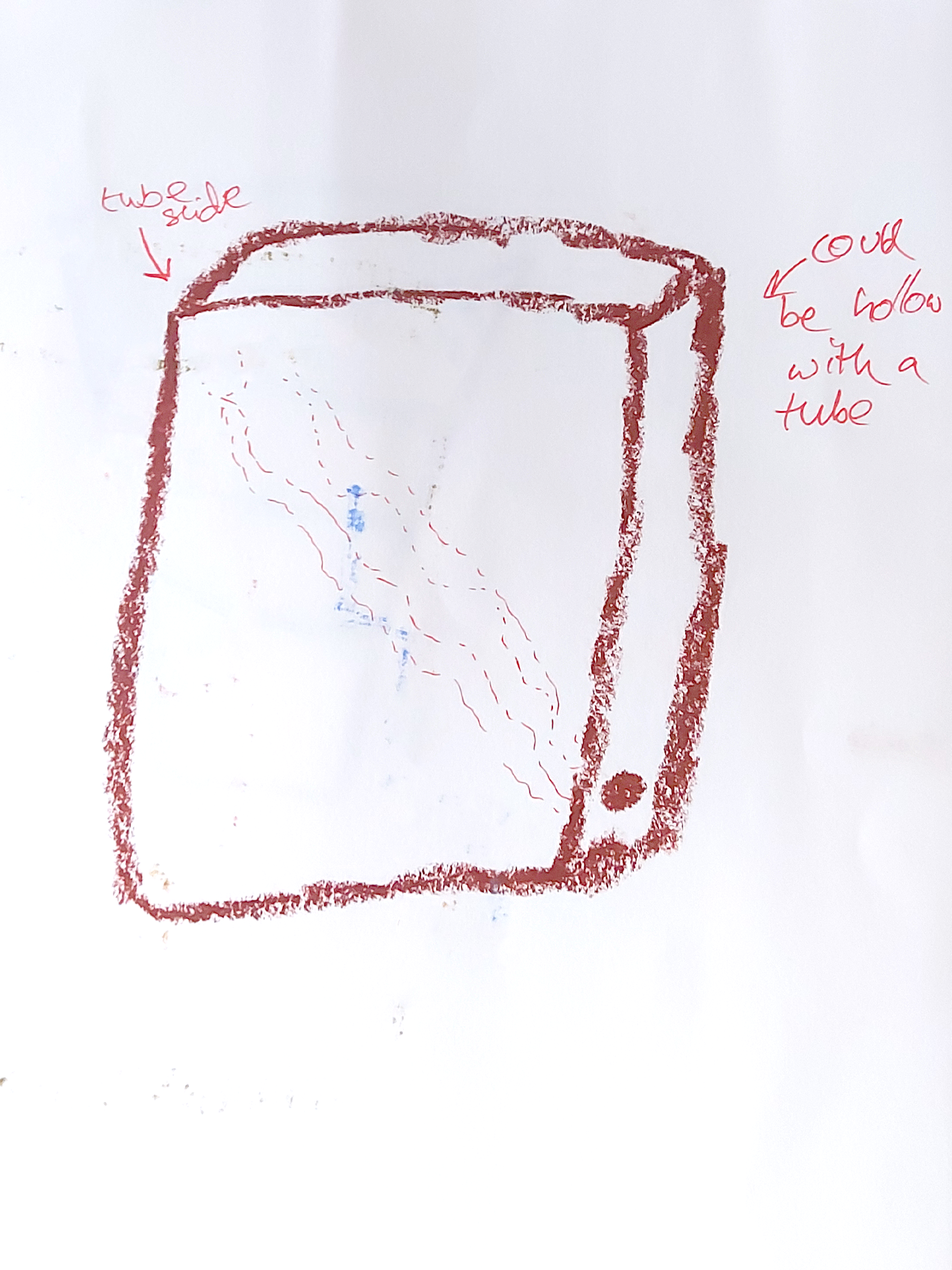
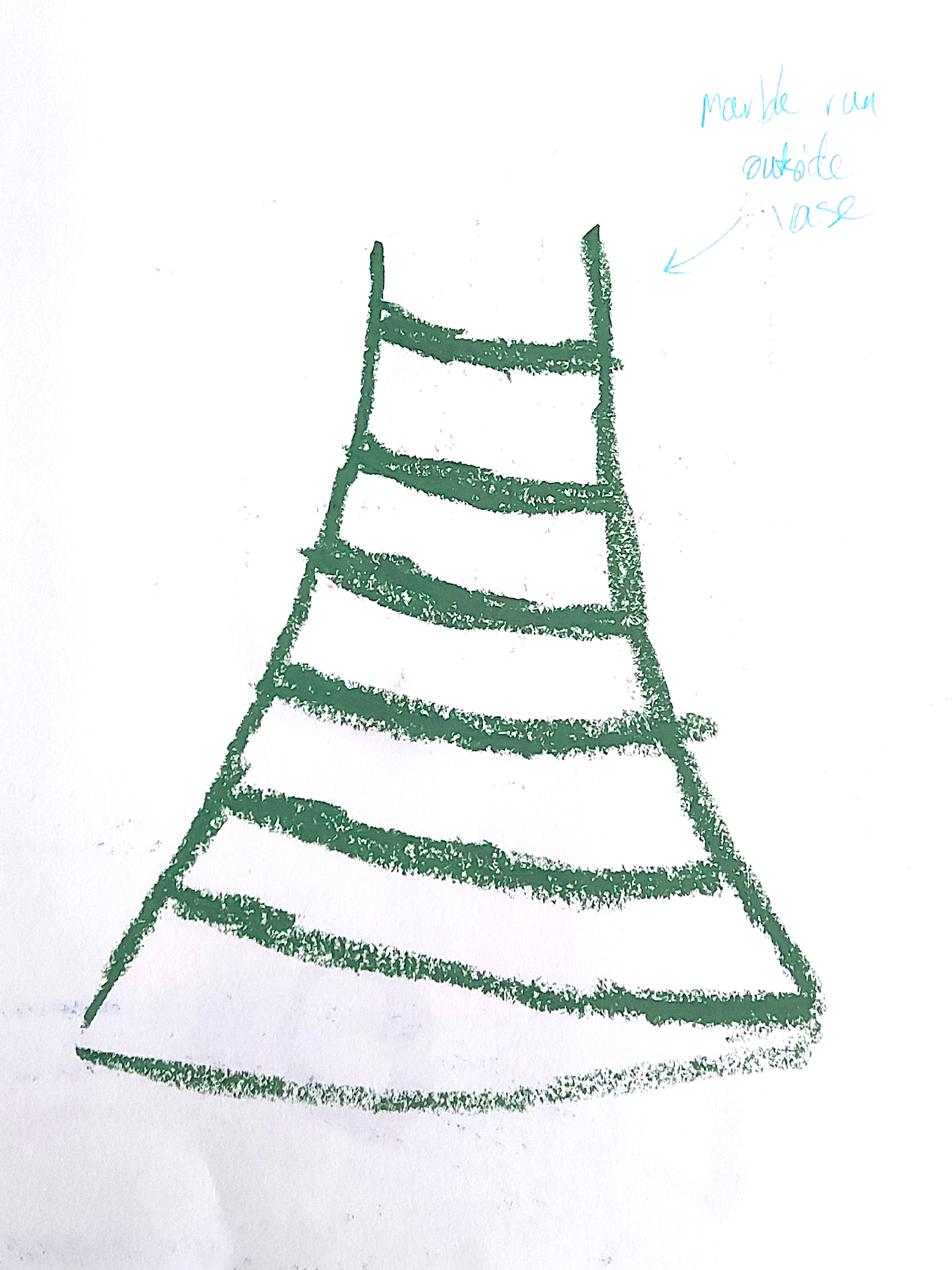
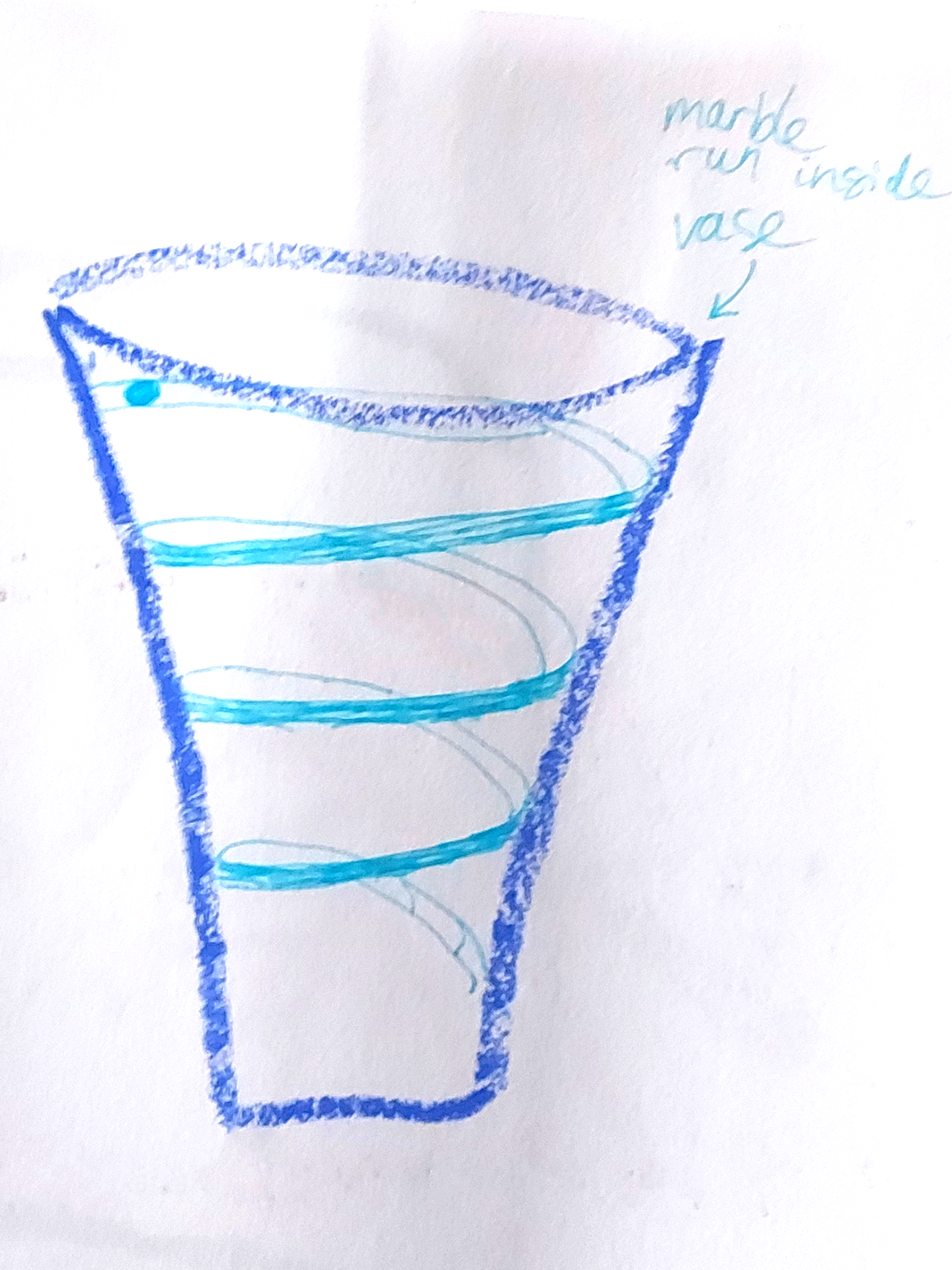

I continued with the idea of motion within the further pieces whether that was slotting shapes in, marble run inspired designs or a wire bead game inspired design. Although I liked these designs the reason I liked the Kerplunk idea was because I could create a function with it which was adding pencils and having pieces of stationery fall through the cracks. However, I didn't want to close off my options at this point so I did some further research to see how interactive design was used in museums, as well as shapes in museums, to see if this could further my understanding.
Museum and Interactive Design Research



I went to see the Strange Clay exhibition in London and saw different ways of presenting clay within art. The first photo shows different shaped tiles on the wall and showing different colours within the abstract shapes. Shaped tiles aren't used a lot within the home in the 21st century but I really liked the idea of using tiles as art. The second photo shows different architectural inspired shapes, inspired by his origins in different countries. I really liked the sleek shapes and the seeing the similarities and difference within them.
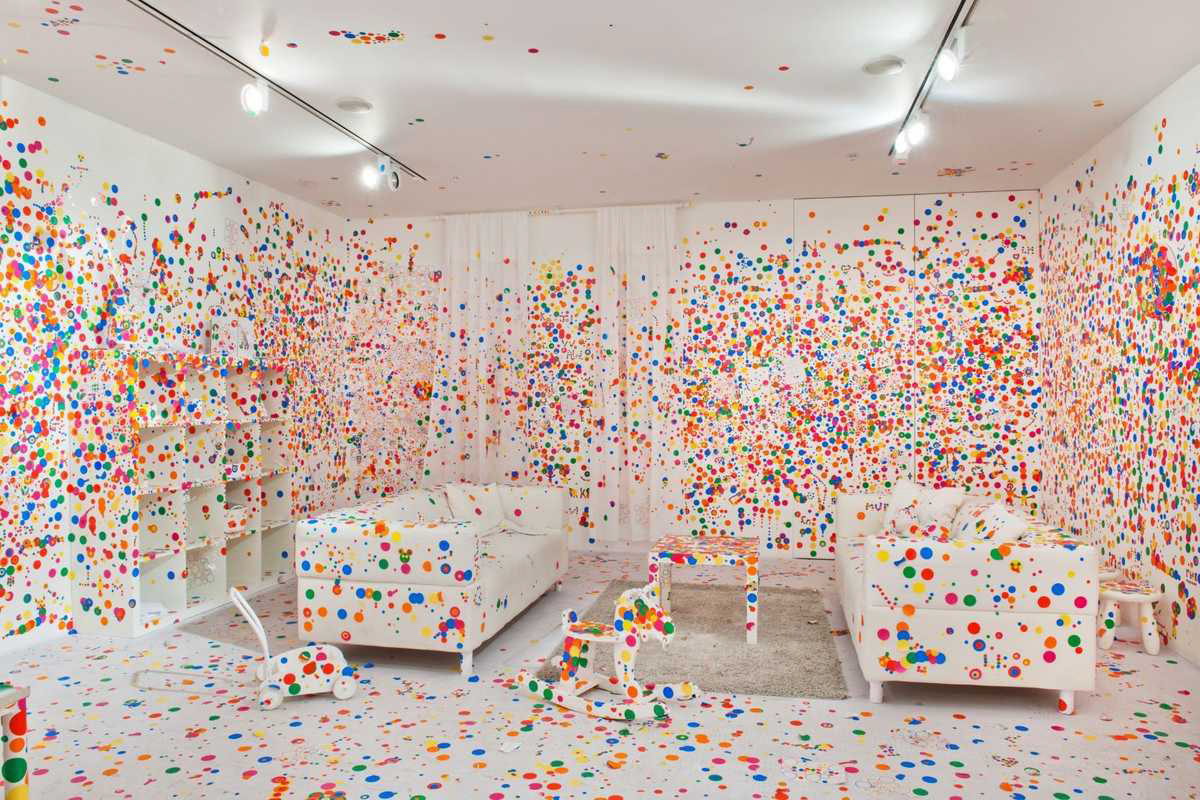
Can be found at: https://www.tate.org.uk/whats-on/tate-modern/uniqlo-tate-play/uniqlo-tate-play-the-obliteration-room
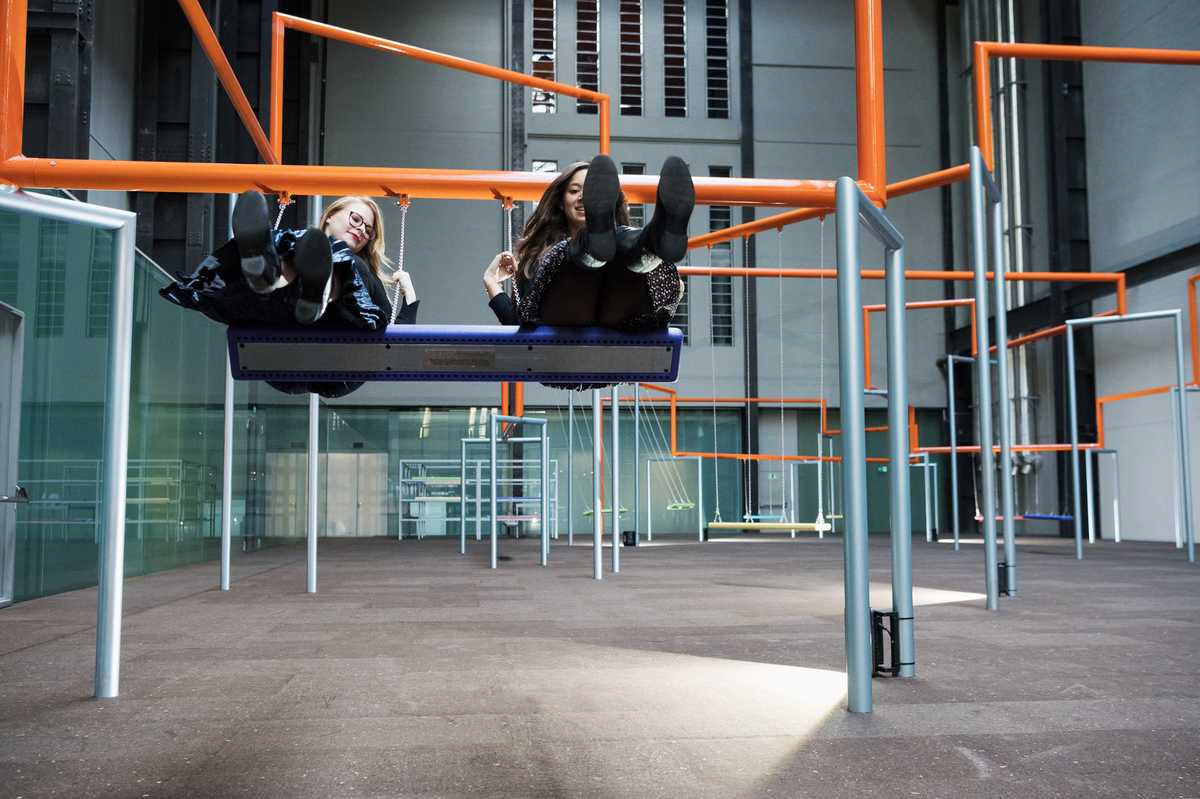
Can be found at: https://www.tate.org.uk/whats-on/tate-modern/hyundai-commission-superflex
When looking at interactive play, the exhibition 'The Obliteration Room' by Yayoi Kusama, an exhibition at the Tate Modern, gets the audience to stick small colourful dot stickers onto a completely white space. This is a form of play on a large scale as it is a form of interacting with mundane objects and making them more colourful. Another exhibition that makes me think of play is 'One Two Three Swing!' an exhibition by the Danish Arts Collective Superflex. This exhibition allowed visitors of the museum to swing on swings that were made for two or three people to sit on. Both of these exhibitions weren't necessarily targeted at children and I believe that they both aim to inspire adults to get in touch with their 'child-like' side and interact with creative and play activities.

Can be found at: https://www.creativeboom.com/news/play-more-the-worlds-first-art-exhibition-for-dogs-courtesy-of-dominic-wilcox/
During my research I also saw an exhibition that let dogs to play within the space. The exhibition was aimed at owners to think about different ways to get their dog to play. There were also paintings at floor level for the dogs to be able to look at. This was another way of looking at play within exhibitions and how adults could look at play within their own life whether that be with their dog or with others.
Within my research I also found an exhibition that looked at how the covid pandemic impacted play, one of the submissions for this exhibition was an outside game that used social distancing rules within it. This exhibition was thought provoking and made me think about my own designs. Are they only going to be safe in terms of the physical aspects e.g. are the parts going to be rounded enough to use? Will lots of people be touching it?
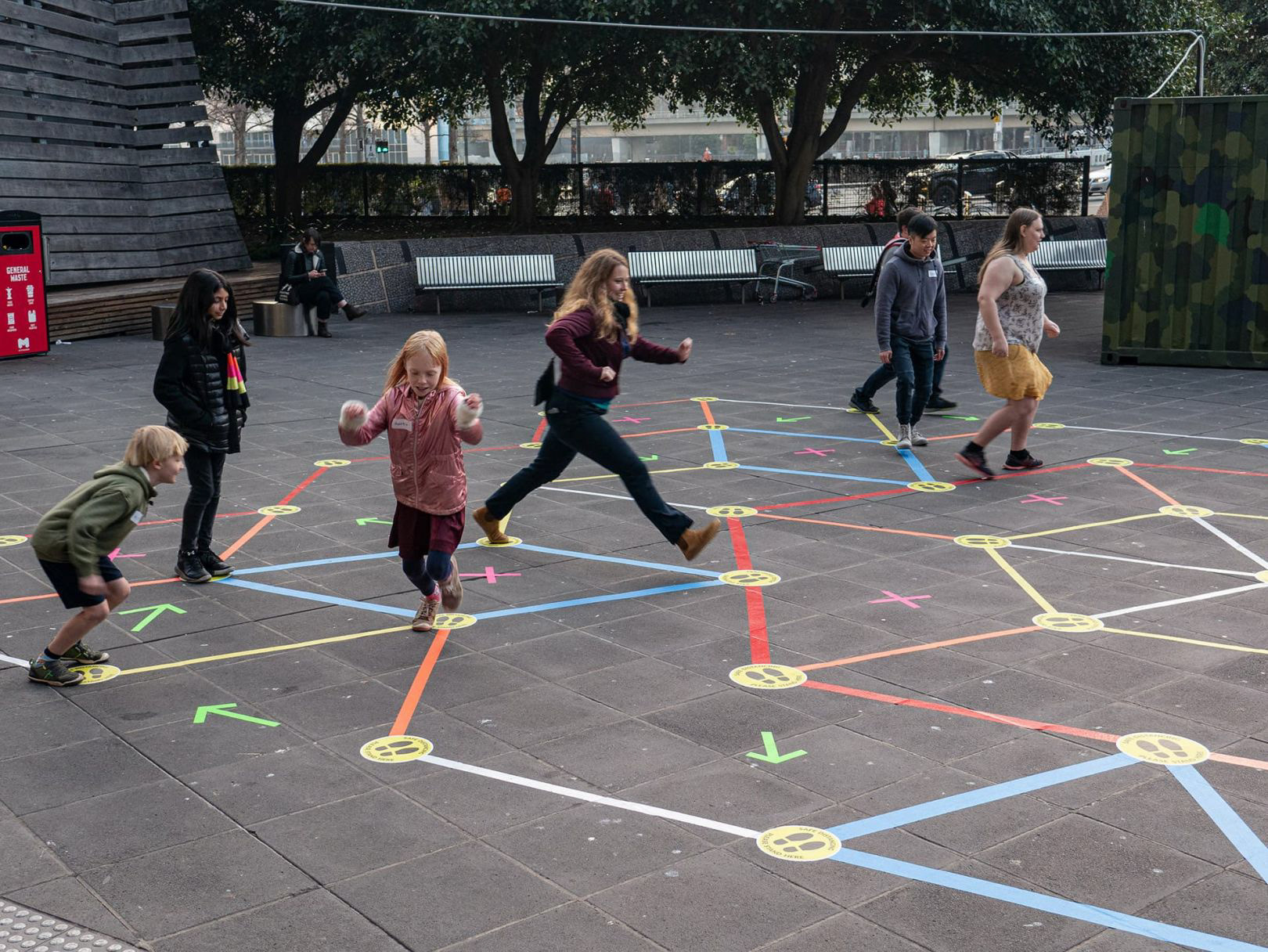
Can be found at: https://www.creativeboom.com/news/play-in-the-pandemic/

Can be found at: https://www.creativeboom.com/news/gabriella-marcellas-colourful-installation-for-va-dundee-explores-the-rules-of-play/
I also found another installation which was inspired by the founder of the kindergarten system, Friedrich Froebel. The idea of play as a form of education was not a recognised view within the 19th century but is now a widely used idea today. The exhibition 'Rules of Play' by Gabriella Marcella inspires the visitors to use small wooden planks with a ratio of 1x3x15 to create different shapes and brings the idea of play and how we as humans play back to basics..
Another interactive installation I found that was inspired by play was Thought Bubble. This installation allows users to play with levitating bubbles from an app on their phone. The use of technology redefines the use of playing with a ball and makes playing with a ball almost a digital game. The use of phones and technology within games is widespread, however, I think a part of play is using your own body to interact with material and that is what I want to achieve within my finished piece.
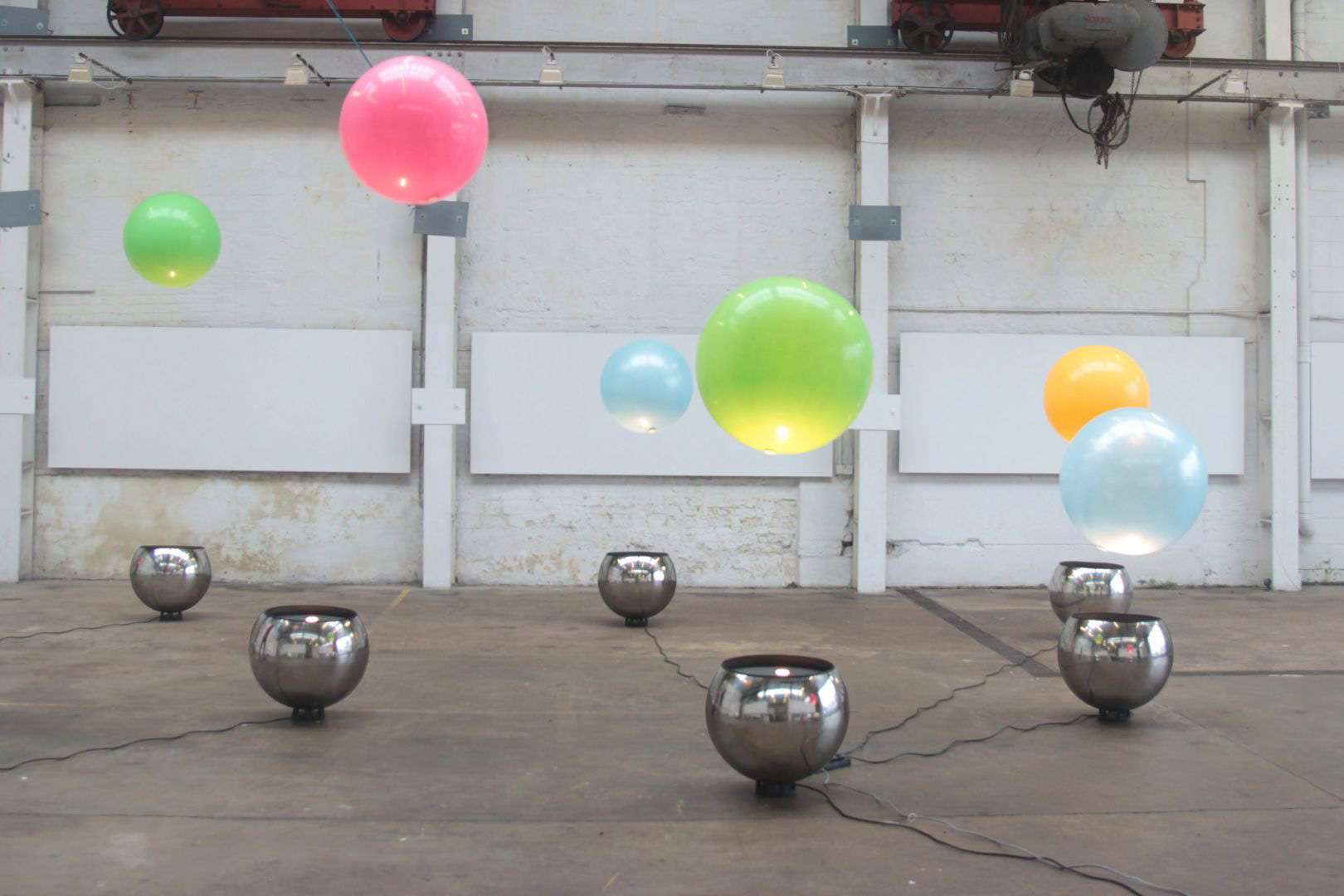
Can be found at: https://www.creativeboom.com/inspiration/interactive-installation-that-lets-you-play-with-giant-colourful-orbs-that-levitate-in-mid-air/
Cardboard Modelling
I then decided to model two of my pieces that I liked, the Kerplunk inspired idea and the sliding maze idea. Using cardboard I decided to experiment with how I'd go about making these.

I created this cardboard model to see how pencils would slot into the different holes around the cylinder shape I made. I wanted to use a cylindrical shape just to see how using a curved shape would work with all the different pierced holes - would they distort them? I found that the shape did not distort the holes, but due to the material, the holes weren't equal in size compared to the pencils which meant that the pencils had some room to move around. This led me to find out that there would need to be a graduated hole for each pencil slotted into the hole as the pencil would need some space to move around. I've decided that within my material samples I am going to experiment with different ways I can make these graduated holes in the clay. I really like the idea of having the pencils being a part of this piece.

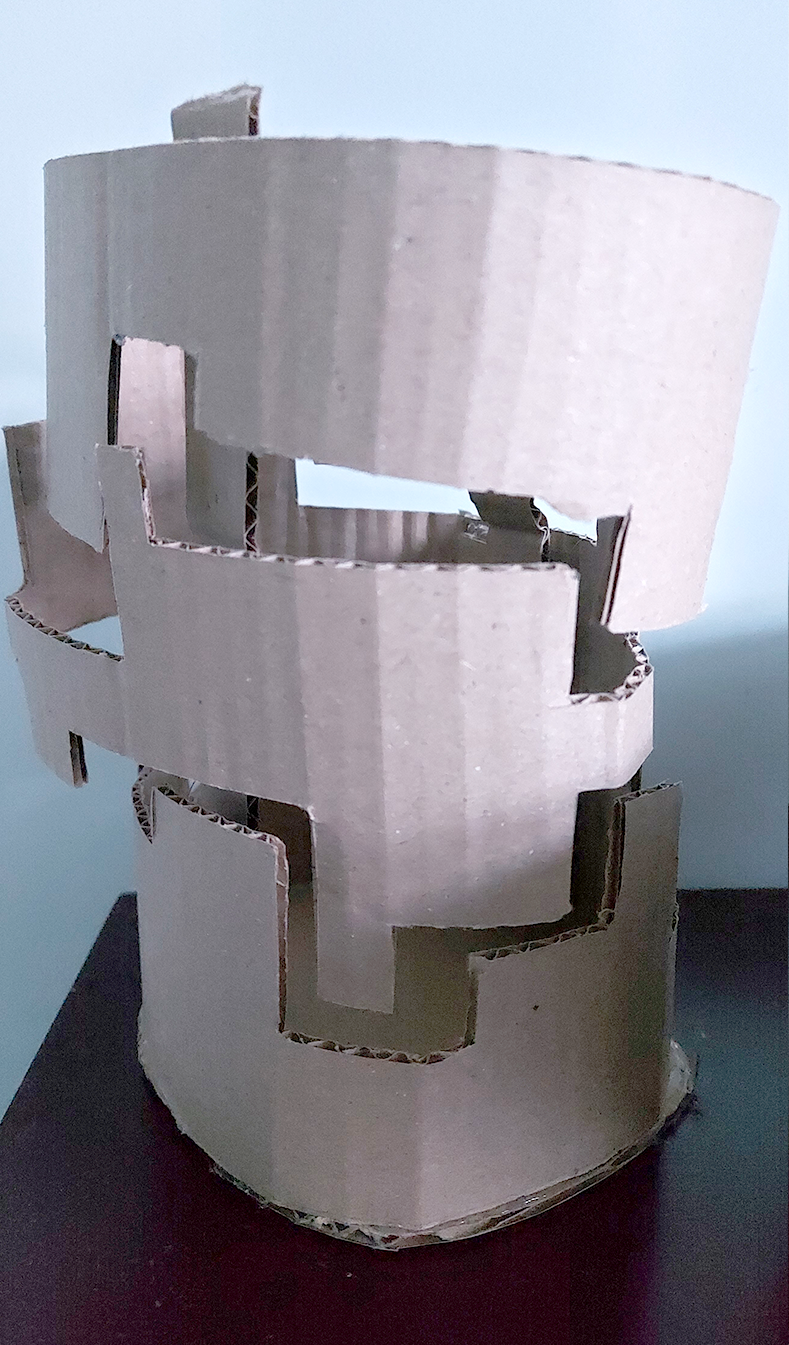
This piece is a maze inspired model where moving counters could move around the form. I also decided to use a cylindrical form because the counter would be able to move smoothly. Although I tried to make the maze equal width and had to find a way to keep it all together by holding it together with vertical cardboard beams on three sides of the maze, the piece still moved all over and I couldn't see a way for it to work, especially with a denser material like clay.
Storage Research
I decided I wanted to continue investigating my pencil Kerplunk inspired idea and did this by looking into the different ways artists changed the way we interact with storage items. The artist Andrea Rekadlidis created a set of ceramic storage pieces for stationery inspired by architecture. The different shapes changes the way the user interacts with the pieces and what they put in each piece e.g. the pencil storage is outside instead of inside the ceramic shape.

Can be found at: https://www.dezeen.com/2014/10/16/andrea-rekalidis-souvenir-collection-desk-tidies-italian-landmarks-ceramic/

Can be found at: https://www.dezeen.com/2015/11/30/antonio-arico-still-alive-desk-tidy-set-for-seletti-design-miami-2015/
These storage pieces by Antonio Aricò use a mix of materials to create a storage set that could be arranged to look like a still life painting, due to the varied objects. I really liked the simple shapes of the objects as this meant that there were multiple uses for each piece. This made me think about the versatility of my own idea as I wanted as many different pens and pencils to fit into my form but if the holes were too big, then the pencils would just fall out of the circle.
This is a tea light holder called Lume by Alessandro Zambelli. Although this was a tea light holder I thought this piece designed to look like a satellite was really interesting as it was utilising the shape to cover part of the candle so it wouldn't be affected by any wind to blow it out. I also liked the bright colours used so that it wasn't trying to replicate that shape. I want to make sure I'm using the best shape possible thats the right ratio and height so I will experiment with this within my material samples.

Can be found at: https://www.dezeen.com/2016/01/28/forget-me-not-ceramic-gifts-bosa-maison-objet-2016/
Further Sketches
Using my research on storage I decided to sketch different ways I could present this idea in terms of shape and pattern of holes.


I started by sketching shapes that I could potentially use for the piece, I really liked the idea of a hexagonal or circular piece and then went on to sketch more curved pieces which I thought wouldn't be functional. This was due to the user needing space in all parts of the piece to put their hand in to get small stationery bits when needed. I decided to then explore different ways of using equal shapes for this piece.
NARROWING DOWN SHAPES TO EITHER HEXAGON OR CIRCLE NOT THE OTEHR SHAPES DUE TO FUNCTIONALITY AND EXPLAIN



I wanted to visualise how the piece would look, and decided it would look best on a desk as a stand alone piece. I sketched how I'd initially organise the holes on the piece, but I wanted to explore this within my material sample. I also wanted to see what the pencils would look like crossing each other and so did an X-Ray style of the piece seeing how I think it would look inside.


On the left sketch I created some patterns inspired by my research, a lot of the designs and museum pieces I saw that used play used bright colours. I didn't know if this would be too busy for my piece, so I will see when I create my final piece if there would be any room for pattern on the piece. On the right sketch I visualised how the piece would be used: the pencils would be slot in and then stationery would be put over them to see how the stationery would react in the piece, will it go to the bottom or get stuck in between the pencils? Will this change when the pencils get taken out or slotted in? I really liked this idea of movement created by another movement and think this is going to be a fun piece when the final one is made.